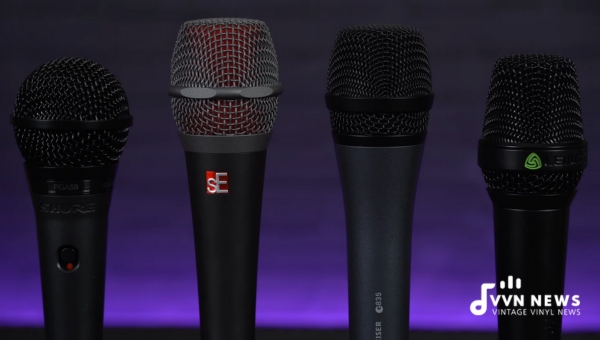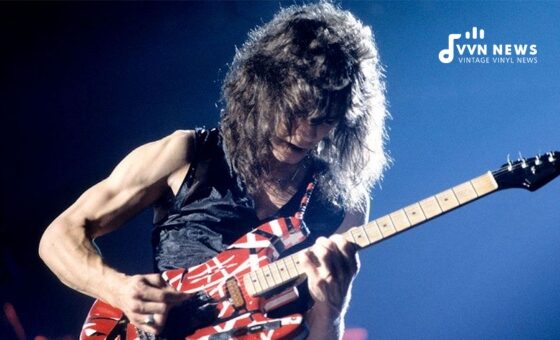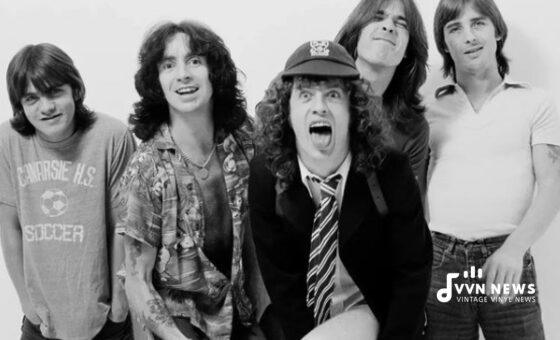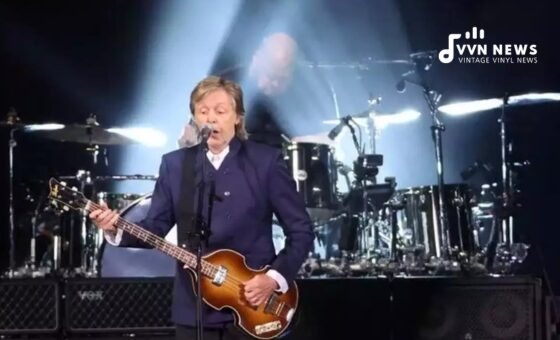Specific tools can make all the difference when it comes to enhancing the quality of your vocal recordings or performances.
One key element that can elevate your vocal prowess is a high-quality microphone.
With an overwhelming number of options in the market today, how do you know which microphone stands out? Today, we’ll dive into this dilemma by exploring The Best Vocal Microphones.
Let me reassure you it’s about much more than just brand names or aesthetics.
The best vocal microphones bring various elements, including sound clarity, tone quality, and durability for frequent use.
Whether recording in a studio or performing live on stage, choosing a microphone that suits your needs is essential.
Deciphering which microphone is perfect for you could turn an average performance into an exceptional one. So, let’s delve right into it!
The Importance and Role of Vocal Microphones
Vocal microphones play a pivotal role in capturing and amplifying your voice. It’s worth noting that the key to a professional-sounding recording isn’t just about having a great voice – it’s also heavily reliant on the device used to record it.
Accurate Sound Reproduction
One of the main functions of a vocal microphone is to reproduce your voice with utmost accuracy.
When singing or speaking, you’re projecting an array of different frequencies.
An excellent vocal microphone will pick up all these nuanced sounds and frequencies without distortion or loss of clarity.
Amplification
Moreover, amplification is another primary function of these handy tools. If you’re performing in front of a large audience, you’ll need assistance from a microphone that can amplify your voice to ensure everyone hears clearly.
Your vocals should cut through any background instrument sounds or ambient noise; thus, absolute clarity is crucial in avoiding that muddled sound we have all had the misfortune to hear now and then.
Quality and durability
The significance of perfect vocal reproduction extends beyond just recording. Predominantly, it also speaks volumes about your respect for quality audio.
Simultaneously, dependability cannot be excluded from the equation as well; investing in a durable microphone equates to fewer accidents and malfunctions.
Also Read: 25 Best Dynamic Microphones For Vocals & More In 2025
Impact on Performances
The right mic will also profoundly influence performances – think about how often you’ve seen performers intimately interacting with their mics on stage!
With comfort taken into account, it isn’t rare for artists’ preferences to weigh heavily on specific got-to microphones when performing live.
Underscoring the importance of vocal microphones necessitates understanding what roles they play precisely.
They do more than merely “pick up sound” – they’re critical components that can massively affect audio quality and overall performance.
Types of Vocal Microphones
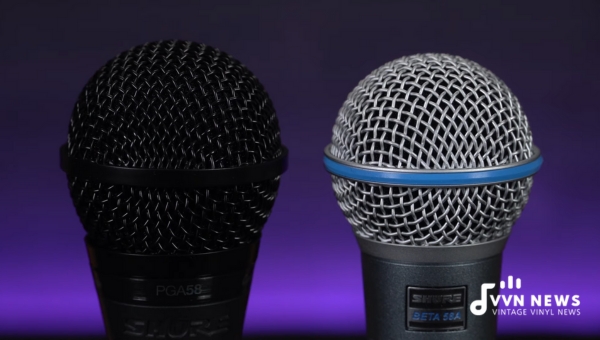
Distinguishing between the various types of vocal microphones available takes us a step closer to making an informed decision. Primarily, we’ll focus on three categories:
- Dynamic Microphones
- Condenser Microphones
- Ribbon Microphones
Dynamic Microphones
Dynamic microphones, arguably the most resilient, are renowned for their robust construction and ability to handle high sound pressure levels.
These traits make them an excellent choice for live performances and instruments that emit loud, booming sounds, like guitar amplifiers and drum kits.
Dynamic mics use a simple design that employs a diaphragm, voice coil, and magnet to generate sound.
They don’t require external power or batteries, making them highly versatile for various scenarios.
Notable examples include the Shure SM58 and the Electro-Voice RE20; both are industry stalwarts praised for their durability and superior sound quality.
Condenser Microphones
Unlike dynamic microphones, Condenser microphones have powered circuits that require phantom power (a voltage supplied by a mixing board or interface).
This grants them their most distinguished feature – sensitivity. Their design permits meticulous sound capture, capable of picking up even the faintest sonic details, making them ideal for studio vocal recording.
This level of sensitivity comes with trade-offs in durability. Condenser mics are typically more fragile and vulnerable to high sound pressure levels than dynamics.
Two popular condenser mics in the market today are Neumann TLM 102 and Audio-Technica AT2020.
Also Read: 15 Best Vocal Compressors of 2025 [Improve Your Vocal Mixing]
Ribbon Microphones
Lastly, Ribbon microphones. These fall somewhat out of favor for the general populace due to their high price tags and delicate nature (even more so than condenser mics).
They are beloved in professional circles for their ability to capture an incredibly natural and warm sound.
As the name suggests, Ribbon microphones employ a thin metal ribbon that vibrates to produce a signal when hit with sound waves.
The sound produced by this design is characterized by its smooth high frequencies and rich resonance in low-mid ranges, which is excellent for establishing that “vintage” audio feel. Royer Labs R-121 is an excellent example of a ribbon mic.
When selecting between these types of vocal microphones, it’s crucial to consider their applications as per your requirements.
Whether it’s the ruggedness of dynamic mics, the sensitivity of condenser mics, or the exceptional audio response from ribbon mics, pondering these aspects will lead you closer to your perfect match!
How to Choose the Right Vocal Microphone
Choosing the right microphone might seem daunting due to the variety of microphones available in the market.
Here’s a simplified guide on key factors to consider.
Decide on Your Purpose
Before looking for a microphone, ask yourself, what will I be using this microphone for?
Is it for podcasting, recording vocals, or live performances? Certain mics are explicitly designed for different purposes.
Dynamic mics, like Shure SM58, are typically used for live performances due to their ruggedness and handling of high sound pressure levels (SPL).
Condenser microphones such as Neumann U 87 Ai – prized for detail and accuracy – work great for studio recording.
Pick a Pick-Up Pattern
Microphones also come with different pick-up patterns. Common patterns include cardioid, which picks up sound predominantly from the front (ideal for vocalists), while omnidirectional mics capture sound from all directions.
Consider Your Budget
Your budget plays an inevitable role in decision-making. Premium mics such as Neumann’s ones offer superior quality but can be hefty on the wallet.
Brands like Audio-Technica and RØDE offer excellent alternatives in the mid-range segment.
Choosing the right vocal mic is an individual journey influenced by personal preferences and requirements. You are your own best judge on this one.
Also Read: 25 Tips For Recording Vocals Like A Pro [2025 Guide]
The Best Vocal Microphones
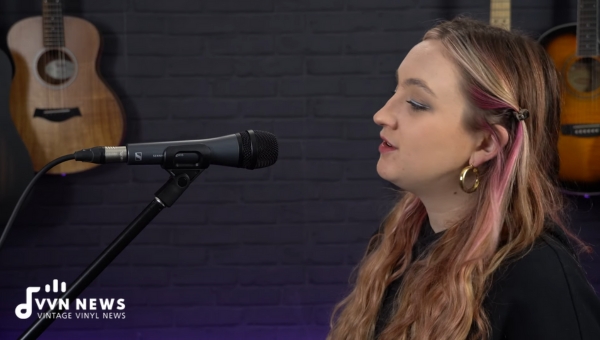
With numerous options in the market, navigating your way to find the absolute best vocal microphone can be daunting.
Yet, two standouts that have made their way into various recording studios and stages worldwide are the Shure SM7B and Shure SM58.
Shure SM7B
Shure SM7B is a dynamic microphone loved by many ranging from podcasters and broadcasters to musicians. It is renowned for its exceptional sound quality.
Standout Features
- A Flat, Wide-Range Frequency Response: The Shure SM7B delivers a smooth, natural reproduction of music and speech. It comes with bass roll-off and mid-range emphasis control features enabling tonal adjustments.
- Effective Pop Shielding: If you’ve ever been bothered by breath noises or popping sounds while recording, rest assured, as this microphone has excellent shielding against that.
- Excellent Noise Rejection: Thanks to its internal air suspension shock isolation and highly effective pop filter installed on the microphone cartridge, unwanted noise interference is significantly minimized.
- Robust Build Quality: This mic is built to last with its rugged construction making for reliable performance no matter how demanding your recording environments may be.
The Shure SM7B truly shines in a controlled studio environment where it can deliver clean, natural sound production.
Shure SM58
Following closely is the Shure SM58, another dynamic mic specializing in live vocal performances due to its frequency response tailored explicitly for vocals.
Standout Features
- Brightened Midrange: The carefully designed frequency response brightens the midrange while controlling bass frequencies which assists in delivering warm, rich vocals.
- Built-in Spherical Wind and Pop Filter: The Shure SM58 features an integrated wind filter that effectively reduces breath noise and ‘pop’ sounds.
- Cardioid Pickup Pattern: This isolates the primary sound source (your voice) and minimizes background noise, ensuring clarity in even the noisiest environments.
- Legendary Build Quality: This microphone is constructionally solid, and longevity is virtually guaranteed. It’s famously known to withstand rough handling making it perfect for touring.
The Shure SM58 is a reliable workhorse for any live vocalist. Its durability, combined with its excellent sound reproduction, earns it a well-deserved spot as one of the best vocal microphones on our list.
It should be high on your consideration if you’re often on tour or performing live.
Electro-Voice RE20
The Electro-Voice RE20 is the broadcast studio voiceover mic used by pros for years. The RE20 is acclaimed among broadcasters and sound engineers worldwide.
Standout Features
- Variable-D Pattern: Unique in the industry, this feature ensures pure and clean sound minimizing background noise interference.
- Built-in Pop Filter: It features a built-in anti-popular function that minimizes the P-popping phenomenon.
- Heavy-duty Internal Pop Filter: It reduces the proximity effect, allowing close-in voice work without added distortion.
- Steel Case Construction: This ensures exceptional reliability under demanding conditions.
The RE20 is designed to provide fine speech intelligibility making it perfect for broadcast studios and voiceover work.
Neumann TLM 102
The compact Neumann TLM 102 brings the revered Neumann sound into the reach of home studio owners.
It’s a large-diaphragm, transformerless condenser microphone that provides top-of-the-line performance at a budget-friendly price.
Standout Features
- Cardioid Pickup Pattern: Perfect for isolating vocals and rejecting off-axis sounds.
- High Maximum SPL: This allows the mic to handle high sound pressure levels with ease.
- Compact Size: Its small stature makes it easy to place this microphone in tight spaces or set-ups.
Discover more about Neumann TLM 102 as an impressive option that offers amazing value-for-money performance in both professional recording environments and home studios.
Audio-Technica AT2020
The Audio-Technica AT2020 is a versatile cardioid condenser microphone praised for its superb quality and performance.
It tops the list of budget-friendly studio condenser microphones.
Standout Features
- High SPL Handling: The AT2020 can handle high sound pressure levels with ease. This enables the microphone to pick up varying dynamics.
- Low-Mass Diaphragm: Its low-mass diaphragm helps deliver extended frequency response and superior transient response for excellent overall vocal reproduction.
Whether you’re getting started in your home studio or looking for a versatile mic to add to your surging gear collection, this microphone ensures you’re covered.
Neumann U 87 Ai
The Neumann U 87 Ai is widely regarded as one of the best microphones in the world.
It’s been a staple in recording studios for decades due to its highly reliable performance and unparalleled sound quality.
Standout Features
- Multiple Pickup Patterns: The mic features three directional patterns – cardioid, omnidirectional, or figure-8, thus offering flexibility in recording vocals.
- Switchable Low-Frequency Roll-off: This allows you to cut off undesired low-frequency sounds.
- High Pass Filter: This makes it easy to get rid of the bass build-up caused by proximity effect if any.
With its warm yet transparent sound characteristics, it is truly a one-of-a-kind vocal microphone perfect for a variety of studio applications.
Also Read: 20 Vocal Warm Up Exercises For Singing [Mistakes To Avoid]
Neumann TLM 103
The Neumann TLM 103 is another impressive large-diaphragm studio microphone designed for professional applications.
It boasts technological prowess combined with impressive functionality that suits a range of recording scenarios.
Standout Features
- Cardioid Directional Characteristic: Excellent isolation of your voice from background noise.
- Transformerless circuitry: Almost no self-noise allowing you to focus on the finer details of your recording.
- Impressive Sound Pressure Level: Capable of handling sound pressure levels up to 138dB without distortion.
If you’re looking for pristine and professional-level recordings, the Neumann TLM 103 might be just what you need.
AKG C414 XLII
The AKG C414 XLII has its roots in a lineage with a history dating back to 1971. It is a large-diaphragm condenser microphone tailored for lead vocals and solo instruments.
Standout Features
- Nine Selectable Pickup Patterns: This feature provides an array of choices for various recording scenarios.
- Overload Warning: The AKG C414 XLII comes with a peak hold LED to detect the shortest audio peaks, an incredibly handy tool during the recording process.
- Excellent Dynamic Range: With three switchable attenuation levels (-6/-12/-18dB), it can handle an immense dynamic range from a whisper to a high-output source.
Overall, the AKG C414 XLII shines best when capturing solo instruments or lead vocals in studio-quality applications.
Shure SM57
Famed for being useful and versatile, the Shure SM57 is another staple in recording studios and live stages globally.
Standout Features
- Exceptional Instrumental Reproduction: It is excellent at picking up acoustic instruments or amplifiers while minimizing background noises due to its cardioid pickup pattern.
- Rugged Durability: Its robust construction ensures longevity even through rough handling or frequent transportation.
Whether you’re miking guitar amplifiers or snare drums, the Shure SM57 can handle these tasks skillfully due to its precise reproduction of instrument sounds.
Shure Beta 58A
The Shure Beta 58A is a high-output supercardioid dynamic vocal microphone that is heard on countless stages worldwide.
Standout Features
- High Output Level: It reliably provides high gain-before-feedback in demanding environments, which is perfect for live vocal use.
- Neodymium Magnet: This feature aids in delivering high signal–noise output.
Consider adding the Shure Beta 58A to your arsenal if you’re frequently involved in live vocal performances where durability and vocal clarity matter.
RØDE NTK
If you’re stepping up your recording game and venturing into valve/tube microphones, the Australian-made RØDE NTK is a perfect consideration.
Standout Features
- Ultra-Wide Dynamic Range: The RØDE NTK excels in offering a wide dynamic range, natural warmth, and character.
- Hand-Selected Tubes: Each microphone uses hand-selected twin-triode 6922 valves for outstanding sonic depth and clarity.
The RØDE NTK is an investment worth considering if you’re looking for that distinct warm tube sound for vocals or acoustic siblings.
Audio-Technica AT2035
At an attractive price point with high performance, the Audio-Technica AT2035 has become a go-to microphone for podcasters or home studio owners.
Standout Features
- High SPL Handling: The AT2035 comes with a wide dynamic range providing unmatched versatility.
- Switchable 80 HZ High Pass Filter: This feature aids in removing low-frequency hum or other associated noises.
When affordable quality is paramount, consider the Audio-Technica AT2035 for its exceptional detail and low-noise operations.
Its attractive price does not sacrifice its performance, explaining why it’s widely favored among many hobbyists starting their recording journeys.
Also Read: Recording Vocals At Home [Insider Tips For Professional Sound]
AKG C214
Not veering far from those trusted names in audio equipment, when we talk about versatility and studio-grade sound, AKG’s C214 leaps to mind.
Features
- Large-Diaphragm Condenser: The AKG C214 features a large-diaphragm condenser microphone design, utilized to provide matched-quality sound reproduction.
- Switchable Attenuation Pad: It sports a switchable 20dB attenuation pad that allows recording of loud sources of up to 156dB SPL. This is more than enough to handle the explosive sounds of drum snares or electric guitar amps.
- Recording Flexibility: Its exceptional dynamic range adds flexibility to your recording sessions. You can record different sources without switching mics.
- Robust Design: Aesthetically, the AKG C214 doesn’t disappoint either – it comes with a rugged double mesh grill and scratch-resistant body designed for robust handling.
Considered one of AKG’s finest creations, the C214 steals the show with its superior sonic performance and impressive build.
RØDE NT1
Moving on to our next vocal microphone marvel, let’s discuss the highly revered brand Rode., and their exquisite offering: The RØDE NT1.
Features
- Cardioid Condenser Microphone: The RØDE NT1 is a cardioid condenser microphone designed meticulously to deliver only clarity in sound reproduction. Its cardioid pattern reduces pickup from the sides and rear, focusing on capturing purely your voice.
- Incredibly Low Noise Level: Boasting an incredibly low noise level of only 5dB(A), this microphone assures almost no interference in your recording sessions.
- Internal Rycote Lyre Suspension: In terms of quality components, it features an internal Rycote Lyre shock mounting system, offering superior isolation from vibrations and mechanical noises.
- Sturdy Design: Lastly, the NT1 showcases a durability that’s engineered for longevity with its military-grade construction.
The RØDE NT1 deeply ingrains itself in the list of best vocal microphones with its ultra-low noise level and fantastic clarity; it is a keeper among studio gurus.
AKG
AKG is a well-reputed Austrian audio equipment brand recognized for creating products that continuously redefine audio-tech boundaries.
Their uncanny expertise in combining aesthetic craft with premium sound technology has led to their highly esteemed status within the audio world.
From headphones, and microphones to wireless systems – AKG has committed itself to delivering unmatched sound quality, comfort, and durable designs.
Their assortment of products caters to various needs ranging from studios, stages, or home setups.
Founded in 1945 by two Viennese engineers, Dr. Rudolf Goerike and Ing. Ernst Pless in Vienna, Austria – AKG continues its journey of introducing revolutionary products with superior sound quality and high-end performance.
FAQs About Vocal Microphones
How does the pickup pattern of a microphone affect vocals?
The pickup pattern dictates how a microphone captures sound from different directions. A cardioid pickup pattern, for instance, primarily picks up sound from the front—perfect for isolating vocals.
What makes the Shure SM7B suitable for studio recordings?
With its wide range, flat frequency response, and effective pop shielding, the Shure SM7B enhances vocals while minimizing noise disturbances, making it ideal for studio environments.
Is there a significant difference between dynamic and condenser microphones?
Yes. Dynamic microphones are durable and great for high-volume sound sources, perfect for live performances. Condenser microphones, however, have a higher frequency response and sensitivity, making them more suitable for studio recordings.
Why is the Shure SM58 recommended for live performances?
The Shure SM58 boasts a robust build to withstand rough handling as well as a brightened midrange and built-in filter that helps reduce wind noises or popping sounds—making it excellent for live settings.
What’s special about the sound reproduction of high-quality vocal microphones?
High-quality vocal microphones reproduce sound with utmost accuracy encompassing various frequencies without distortion or loss of clarity.
Conclusion
Selecting the perfect vocal microphone is a crucial step toward achieving fantastic audio results.
Whether it’s the venerable Shure SM7B for studio recordings or the indomitable Shure SM58 for live performances, the right mic can make all the difference.
These microphones truly merit their reputation due to their clear sound reproduction, durability, and versatile features that cater to different environments.
Always ensure to comprehensively review feature sets before settling on a choice that matches your unique vocal requirements, providing you with value in every performance or recording session.
Ultimately, a high-quality microphone becomes your voice’s best friend!
